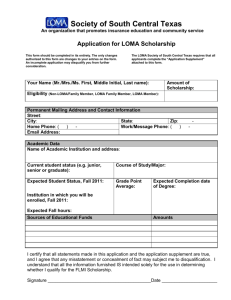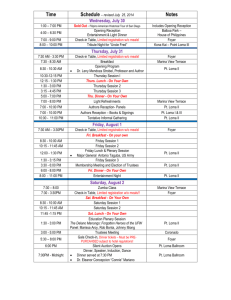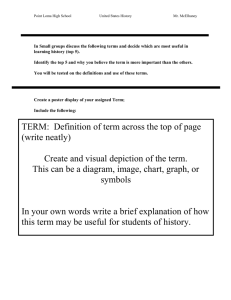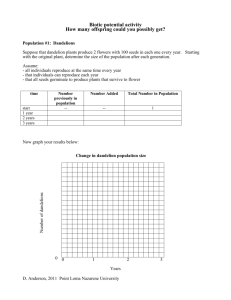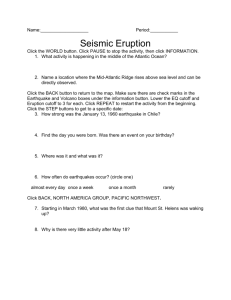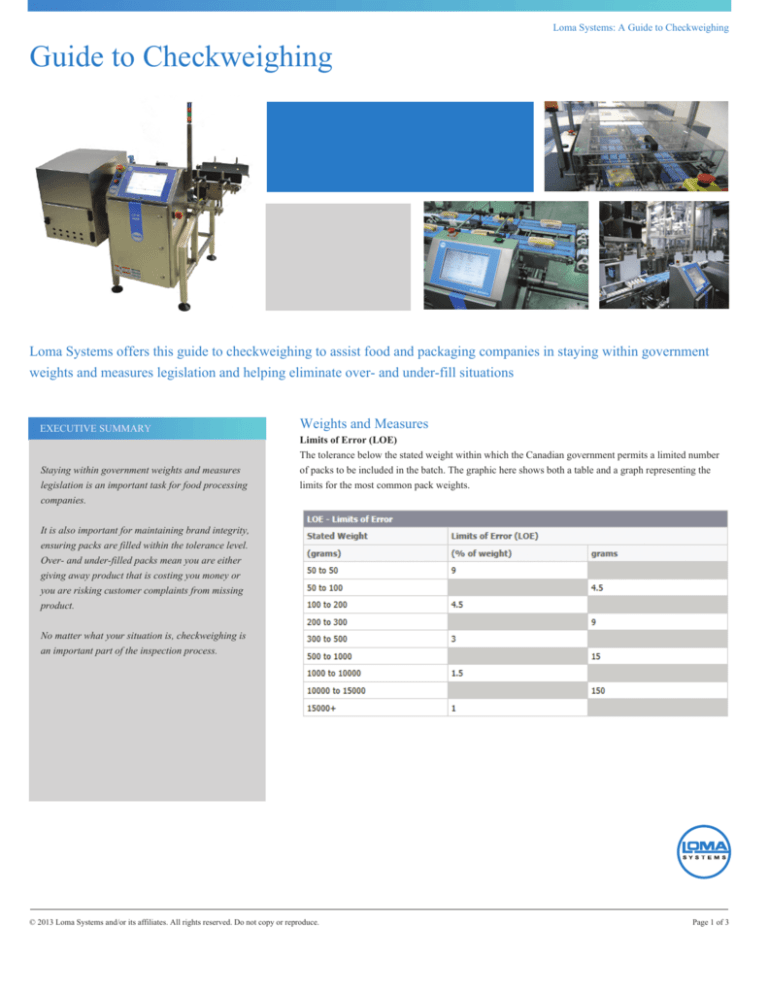
Loma Systems: A Guide to Checkweighing
Guide to Checkweighing
Loma Systems offers this guide to checkweighing to assist food and packaging companies in staying within government
weights and measures legislation and helping eliminate over- and under-fill situations
EXECUTIVE SUMMARY
Staying within government weights and measures
legislation is an important task for food processing
companies.
Weights and Measures
Limits of Error (LOE)
The tolerance below the stated weight within which the Canadian government permits a limited number
of packs to be included in the batch. The graphic here shows both a table and a graph representing the
limits for the most common pack weights.
It is also important for maintaining brand integrity,
ensuring packs are filled within the tolerance level.
Over- and under-filled packs mean you are either
giving away product that is costing you money or
you are risking customer complaints from missing
product.
No matter what your situation is, checkweighing is
an important part of the inspection process.
© 2013 Loma Systems and/or its affiliates. All rights reserved. Do not copy or reproduce.
Page 1 of 3
Loma Systems: A Guide to Checkweighing
Guide to Checkweighing
Enhanced stability through powerful
digital filtering software allows for
consistency in extreme environments.
High field strength and a low center of
gravity control unit eliminates external
interference, vibration and delivers the
ultimate in noise-free detection. Easily
integrated your checkweigher into any
production line.
Tolerable Negative Error (TNE)
The tolerance below the stated weight within which the European government permits a limited number
of packs to be included in the batch. The ‘TNE’ table is the same as the ‘LOE’ table for Canadian
legislation.
Maximum Allowable Variation (MAV)
The tolerance below the stated weight within which the American government permits a limited number
of packs to be included in the batch. The ‘MAV’ table is different to the Canadian legislation.
To save space, companies often turn to combination systems, that
incorporate both checkweighing and metal detection.
Stated Weight
The label weight on the package is the quantity of product the consumer is paying for. Depending on the
company and/or country, this is often referred to as ‘Label Weight,’ ‘Declared Weight,’ ‘Nominal
Weight’ or sometimes ‘Target Weight.’ The Loma checkweighers in the Canadian mode of operation use
the ‘Nominal Weight’ terminology.
T1 Setpoint
The T1 setpoint is a dividing line between two weight zones. Weights falling below the T1 setpoint
cannot exceed 2.5% of the batch; weights above the T1 setpoint can be of unlimited quantity, though the
average of the batch must exceed the stated weight. The default T1 setpoint for Canadian weight
legislation is sStated Weight’ or 1 x LOE.
T2 Setpoint
The T2 setpoint is a dividing line between two weight zones. There can be no weights accepted below the
T2 setpoint; weights above the T2 setpoint (but below the T1 setpoint) cannot exceed 2.5% of the batch.
The default T2 setpoint for Canadian weight legislation is ‘Stated Weight’ or 2 x LOE.
© 2013 Loma Systems and/or its affiliates. All rights reserved. Do not copy or reproduce.
Page 2 of 3
Loma Systems: A Guide to Checkweighing
Guide to Checkweighing
@Loma Systems
www.youtube.com/user/lomasystems
www.facebook.com/ITWLomasystems
www.linkedin.com/company/loma-systems
Lot
For the purposes of legislation, this is a continuous run of production, packaged ready for dispatch to the
consumer (also commonly referred to as the ‘Batch’). Determination of the exact size of a ‘Lot’ or
‘Batch’ is made by a government inspector.
Contact Us
United Kingdom
Southwood, Farnborough
Hampshire, GU14 ONY
+44 1252 893300 | sales@loma.co.uk
Sample Size
For the purposes of this explanation, the sample size is the number of packs from the ‘Lot’ or ‘Batch’
which the inspector chooses to test. The graphic here shows the minimum sample sizes called for by the
weights and measures legislation, depending on the size of the batch or lot.
United States
283 East Lies Road
Carol Stream, IL 60188
800 872 LOMA | sales@loma.com
Canada
333 Wyecroft Road, Unit 11
Oakville, ON L6K 2H2
800 872 LOMA | sales@loma.com
China
Room 101, Block E
No. 168 Luo Yang Road
Minhang District
Shanghai 201104, P R China
+86 021 543 07218 | asia.sales@loma.com
T1/T2 Allowance
For the purposes of this explanation, the T1/T2 allowance is the number of packages the inspector is
permitted to accept between the T1 and T2 setpoints in the sample tests. This allowance is geared to the
size of the sample itself and the graphic shows this allowance as called for by the weights and measures
legislation.
Czech Republic
U Lomy 1069
334 41
Dobrany
+420 377 183811 | cz.sales@loma.com
France
12 Avenue du Quebec Silic 620
Villebon sur Yvette
Courtaboeuf Cx
91945 France
+33 169591620 | fr.sales@loma.com
Germany
Vahrenwalder Strabe
269 A
30179 Hannover
+49 511 9666 811 | de.sales@loma.com
Netherlands
Daalderweg 17
Etten-Leur
4879AX The Netherlands
+31 765030212 | bnl.sales@loma.com
About Loma Systems
Loma Systems is the world’s leading engineering and manufacturing company specializing in metal
detection, checkweighing and x-ray inspection systems. Our products are uniquely engineered for
consistent quality with a low cost of ownership. We have successfully partnered with the world’s largest
food and packaging companies, located in over 100 countries, to comply with product safety standards
and retailer codes of conduct.
Loma has over 120,000 metal detection systems installed worldwide and the IQ3 technology is the
premier inspection system on the market today.
For More Information
To learn more about the checkweighing technology featured in this guide, please visit: www.loma.com
© 2013 Loma Systems and/or its affiliates. All rights reserved. Do not copy or reproduce.
Page 3 of 3

